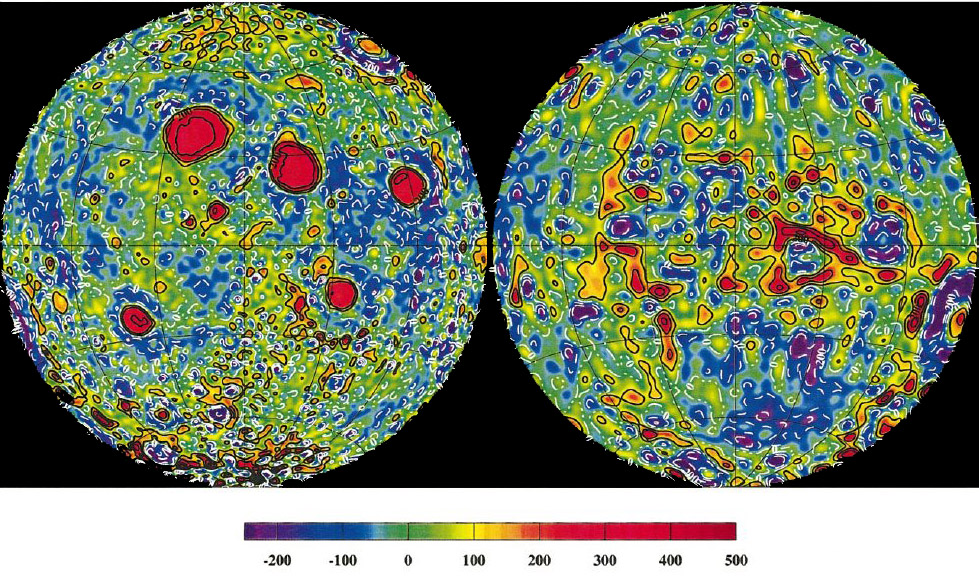image from A.S. Konopliv in Icarus
If our eyes were sensitive to gravity we might see the Moon like this. Red is where there the pull of gravity is high - that is, there are concentrations of excess mass (mascons). Blue and purple mark gravity - and mass - deficiencies compared to the average. The startling features are the bold red circles of excess mass over some of the impact basins - Imbrium and Serenitatis are strong, and Crisium, Nectaris and Humorum are smaller - just as their maria are smaller. Note that Tranquilitatis, and other poorly defined basins (Fecunditatis, Nubium and Australe) have mass deficits. It is thought that the mascons are due to upwelling of the dense lunar mantle under basins and to the surface mass of lava piles that are the maria. Older impact basins probably formed when the Moon was warm enough that the crust and mantle density re-equilibrated after the impacts, with the upwelling mantle subsiding. And note that the maria seem to be less thick than in the mascon basins so that also provides less of an anomaly. Look closely at Nectaris, Orientale and Humboldtianum. These basins have concentric plus and minus gravity anomalies, with the main rims (the Altai, Cordillera and Andes) - like the central thick lava piles - having excess mass, and the intervening moats having a mass deficiency. So when Wes, Bruno, Mike, Paolo and others are flying their spaceships close to the Moon to get their magnifient images they need to not let an unexpected mascon suck them to a crash.
Technical Details:
The map was created by accurately tracking the Lunar Prospector spacecraft as it orbited the Moon; the data are especially accurate from near the end of the mission when the orbit was sometimes as low 10 km above the surface. Notice that there are no large red circular anomalies on the farside, and that other anomalies are elongated north to south. Since the spacecraft could not be tracked over the farside it is likely that some of these features are artifacts - not real!
Related Links:
Rükl pages 190-191
Konopliv, A.S. and others (2001) Recent gravity models as a result of the Lunar Prospector mission. Icarus 150, 1–18.
Trudy Bell (2006) Bizarre Lunar Orbits. Science@NASA
Yesterday's LPOD: 1.5 Billion Years of History
Tomorrow's LPOD: Rilles Near Hase - My First Published Observation
COMMENTS?
Register, Log in, and join in the comments.




